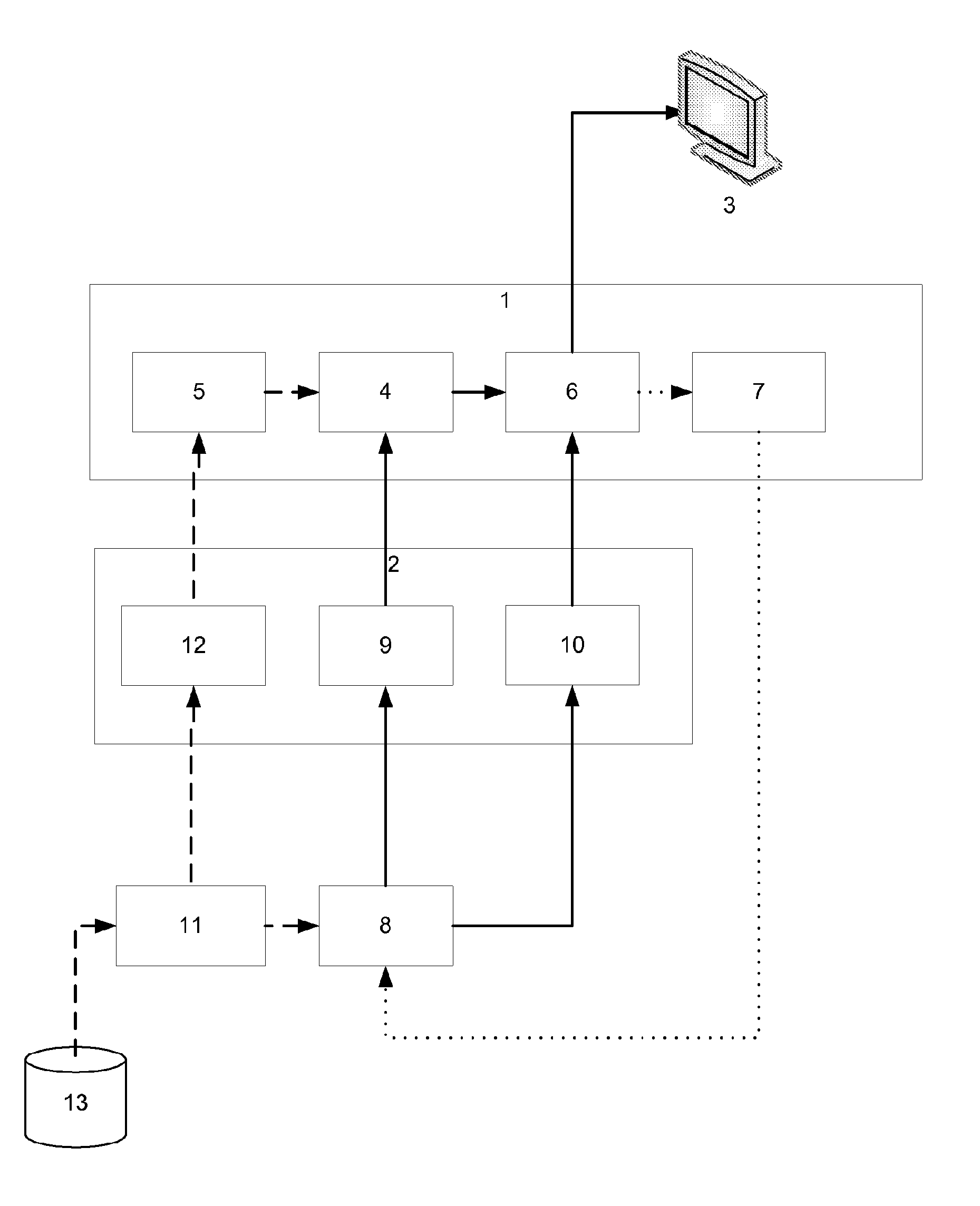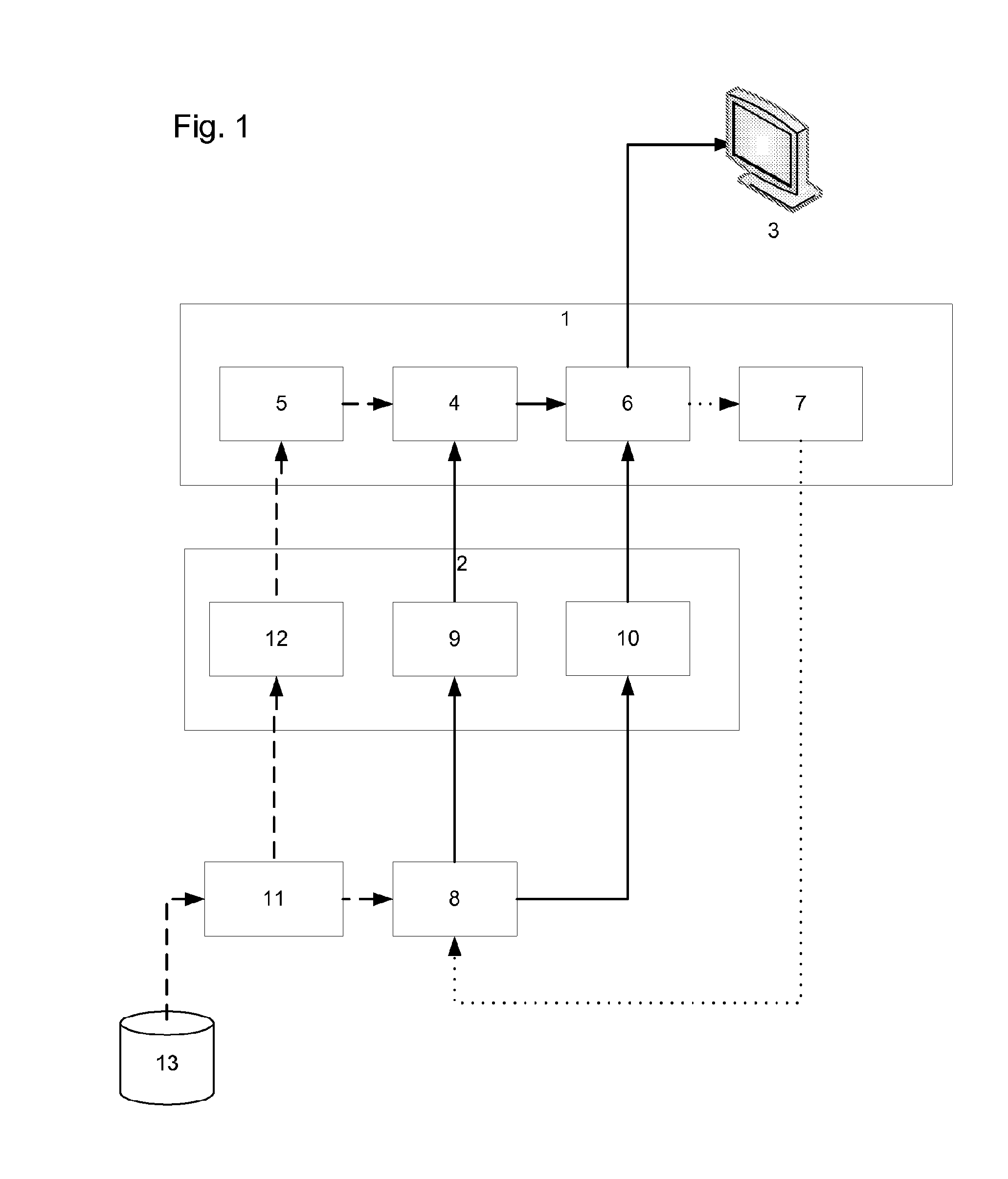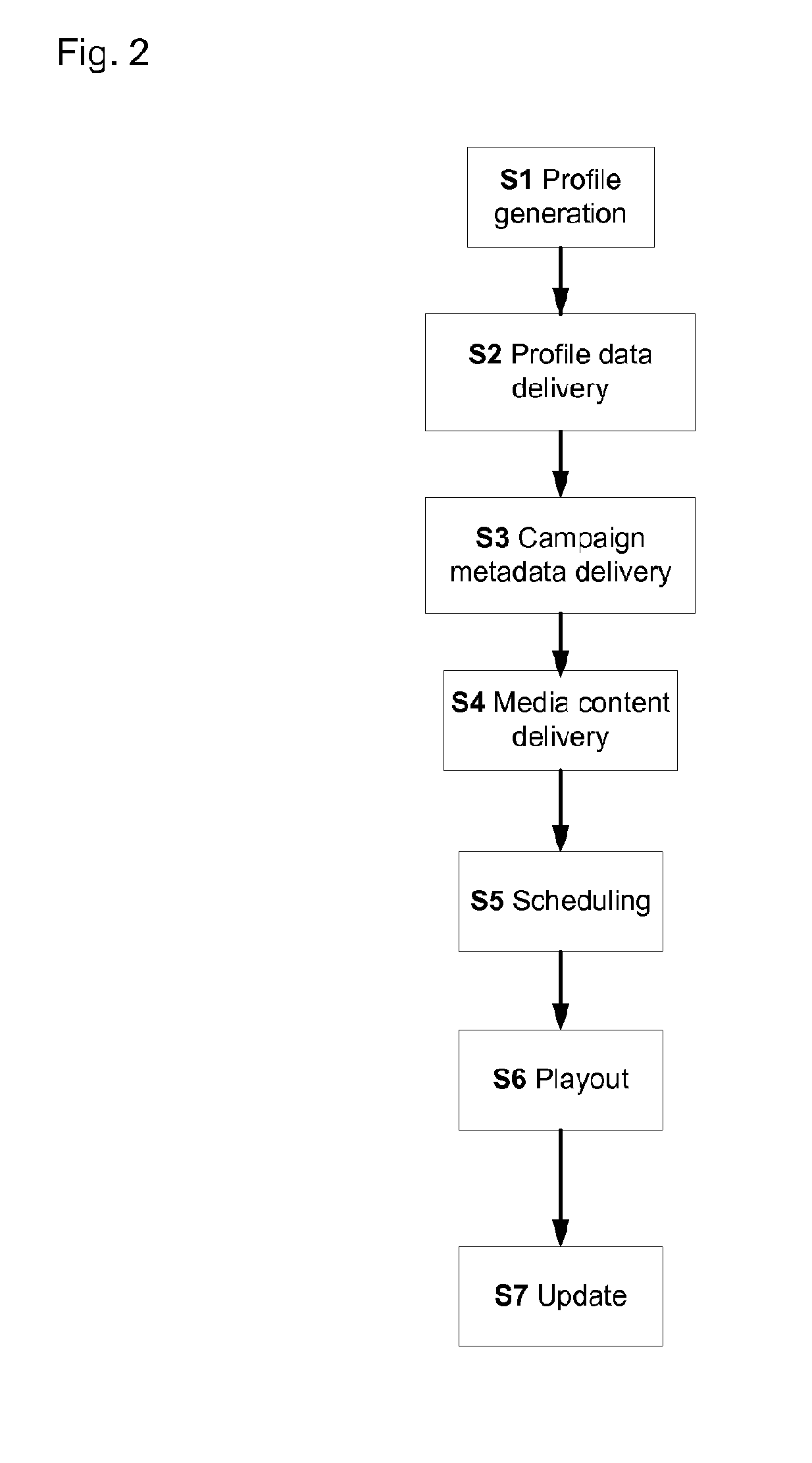Media insertion system
a technology of insertion system and media, applied in the field of program distribution system, can solve the problems of complex scheduling system the complexity of scheduling media items subject to constraints, and the complexity of current linear (i.e. non-substitutional) advertisement scheduling system already involves a considerable level of complexity, so as to avoid the complexity of scheduling based on the individual attributes of subsets of media items
- Summary
- Abstract
- Description
- Claims
- Application Information
AI Technical Summary
Benefits of technology
Problems solved by technology
Method used
Image
Examples
first embodiment
[0127]In the invention, at least some of the above problems are overcome by a process in which the complexity of the substitutional model is reduced substantially to that of the conventional linear model. The present inventors have observed that the attributes belonging to a single campaign and its associated copy items, and the relationships this campaign and copy items have with programming and other copy items within a break are broadly similar regardless of whether a single campaign / copy item combination or an aggregate of many campaigns and many copy items are considered. Referring to the entity-relationship diagram of FIG. 4b, if the Campaign entity is replaced with an Aggregate campaign and the Campaign copy item with multiple Campaign copy items, then the only change that would need to occur is that the relationship between Campaigns and Clash code would change from “one to one” to “one to many”. All other relationships would remain the same. This shows that an aggregation s...
second embodiment
[0150]In a second embodiment, one or more linear media items may be booked into an available slot separately from the substitutional media items, and preferably before any substitutional media items are booked into that slot. The booking of linear media items may be performed using conventional booking techniques. However, it is then preferable to indicate for each slot what kind of substitutional media items can be booked into that slot; this indication comprises so-called ‘avail schedule’ data which is generated and may be updated during booking
[0151]The avail schedule data may be based on one or more predetermined substitutional rules of the host campaign, to which the linear media item belongs. For example, if the host campaign targets “adults” then allow substitutional avails to top-slice high income households)
[0152]The avail schedule data may indicate constraints on substitutional media items that can be booked into the break as a whole, such as:[0153]clash codes relating to ...
PUM
 Login to View More
Login to View More Abstract
Description
Claims
Application Information
 Login to View More
Login to View More - R&D
- Intellectual Property
- Life Sciences
- Materials
- Tech Scout
- Unparalleled Data Quality
- Higher Quality Content
- 60% Fewer Hallucinations
Browse by: Latest US Patents, China's latest patents, Technical Efficacy Thesaurus, Application Domain, Technology Topic, Popular Technical Reports.
© 2025 PatSnap. All rights reserved.Legal|Privacy policy|Modern Slavery Act Transparency Statement|Sitemap|About US| Contact US: help@patsnap.com



